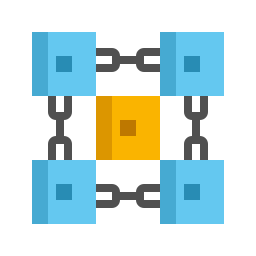The blockchain revolution has been both celebrated and misunderstood since Bitcoin’s emergence in 2009. Despite years of development and real-world applications, persistent myths continue to cloud public understanding of this transformative technology. Let’s dive into the seven most stubborn misconceptions that even tech-savvy individuals often get wrong.
The Reality Behind the Hype
Blockchain technology has evolved far beyond its cryptocurrency origins, yet public perception remains stuck in outdated narratives. These myths don’t just confuse newcomers—they actively prevent businesses and governments from exploring legitimate blockchain applications. Understanding what blockchain actually is, rather than what popular culture thinks it is, becomes crucial as we move toward an increasingly digital future.
Myth 1: Blockchain Is Just for Cryptocurrency
This might be blockchain’s most persistent myth. While Bitcoin introduced blockchain to the world, limiting blockchain to cryptocurrency is like saying the internet is only for email. Today’s blockchain applications span industries from healthcare to supply chain management.
Major corporations use blockchain for tracking pharmaceutical drugs, verifying academic credentials, and managing digital identities. Walmart tracks food products from farm to shelf using blockchain, reducing the time needed to trace contamination sources from days to seconds. The technology’s ability to create tamper-proof records makes it valuable wherever trust and transparency matter—far beyond digital currencies.
Myth 2: Blockchain Is Completely Anonymous
Popular media often portrays blockchain as a haven for anonymous transactions, but this fundamentally misunderstands how most blockchains work. Bitcoin and many other blockchains are actually pseudonymous, not anonymous. Every transaction links to a public address, creating a permanent, traceable record.
Think of it like publishing under a pen name—while your real identity isn’t immediately apparent, enough investigation can often reveal who you are. Law enforcement agencies have successfully traced numerous criminal transactions through blockchain analysis. Privacy-focused blockchains like Monero and Zcash exist precisely because standard blockchains aren’t anonymous enough for users seeking true privacy.
Myth 3: Blockchain Can Solve Every Problem
The blockchain hype cycle has produced countless proposals to “put everything on the blockchain.” This technological solutionism ignores blockchain’s specific strengths and limitations.
Blockchain excels at creating shared, tamper-resistant records among parties who don’t fully trust each other. However, it performs poorly for applications requiring fast transactions, large data storage, or frequent updates. A simple database often works better for internal company records, while blockchain shines for inter-organizational data sharing where trust is limited.
Myth 4: Blockchain Is Unhackable
“Blockchain is unhackable” ranks among the most dangerous myths, creating false security confidence. While blockchain’s core cryptographic principles remain strong, the surrounding infrastructure presents numerous vulnerabilities.
| Attack Vector | Description | Real Examples |
| 51% Attacks | Controlling majority of network computing power | Ethereum Classic (2020), Bitcoin Gold (2018) |
| Smart Contract Bugs | Flaws in self-executing code | The DAO hack ($50M loss), Poly Network ($600M) |
| Exchange Hacks | Attacking cryptocurrency trading platforms | Mt. Gox ($450M), Coincheck ($530M) |
| Private Key Theft | Stealing access credentials | Individual wallet compromises (ongoing) |
| Social Engineering | Manipulating people to reveal information | Phishing attacks, fake ICOs |
The immutability that makes blockchain secure also means that stolen funds or compromised data cannot be easily recovered, making security mistakes particularly costly.
Myth 5: Blockchain Transactions Are Free
Many people assume blockchain eliminates financial intermediaries and their fees entirely. In reality, blockchain networks require transaction fees to function. These fees compensate network participants who validate and record transactions.
During peak usage, fees can become substantial:
- Bitcoin transaction fees have exceeded $50 during network congestion
- Ethereum gas fees reached hundreds of dollars for complex smart contract interactions
- Even “low-fee” blockchains charge small amounts that add up for frequent users
While blockchain can reduce certain intermediary costs, it introduces its own fee structure that users must understand and account for.
Myth 6: All Blockchains Are Energy Hogs
Bitcoin’s massive energy consumption has tarred all blockchains with the same brush. However, blockchain energy usage varies dramatically based on the consensus mechanism used.
Bitcoin’s Proof-of-Work system intentionally requires massive computational power for security. Newer consensus mechanisms offer alternatives:
- Proof-of-Stake uses 99.95% less energy than Proof-of-Work
- Delegated Proof-of-Stake further reduces energy needs
- Proof-of-Authority works for private blockchains with minimal energy use
Ethereum’s transition from Proof-of-Work to Proof-of-Stake reduced its energy consumption by approximately 99.95%, demonstrating that blockchain technology doesn’t inherently require excessive energy use.
Myth 7: Blockchain Will Replace Traditional Databases
Perhaps the most subtle myth suggests blockchain will eventually replace all traditional databases. This misunderstands both technologies’ strengths. Traditional databases excel at:
- Fast read/write operations
- Complex queries and analytics
- Handling large volumes of frequently changing data
- Cost-effective storage
- Easy updates and corrections
Blockchain works best for scenarios requiring:
- Shared truth among untrusting parties
- Audit trails and compliance
- Resistance to tampering
- Decentralized control
- Transparent operations
Rather than replacement, the future likely holds hybrid systems using traditional databases for efficiency and blockchain for trust-critical components.
Moving Beyond the Myths
Understanding blockchain’s real capabilities and limitations enables better decision-making about when and how to use this technology. As blockchain matures, expect new applications that leverage its unique properties while acknowledging its constraints. The key lies not in believing blockchain can do everything, but in recognizing what it does uniquely well: creating trust in trustless environments through transparent, tamper-resistant records. By dispelling these seven myths, we can finally have honest conversations about blockchain’s genuine potential to reshape how we share and verify information in an interconnected world.

